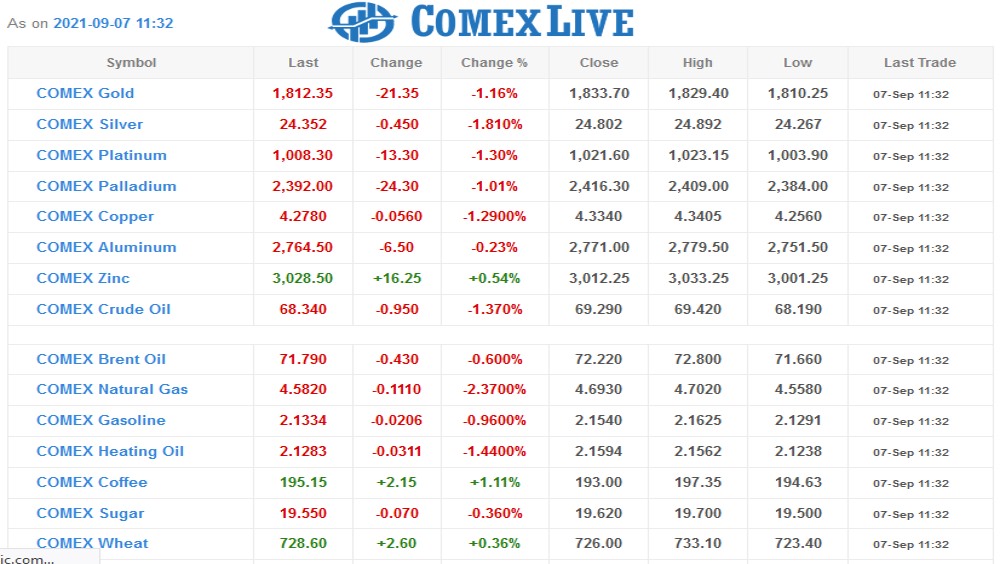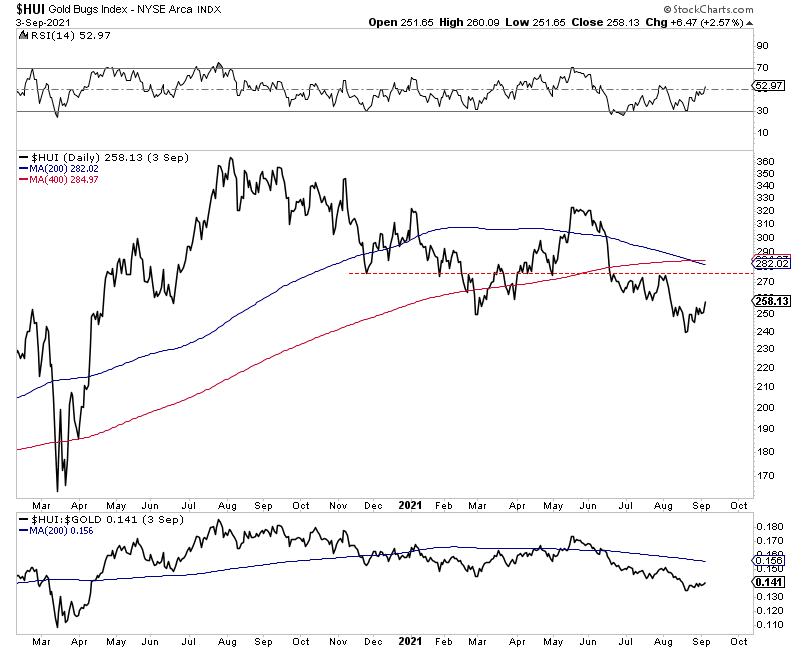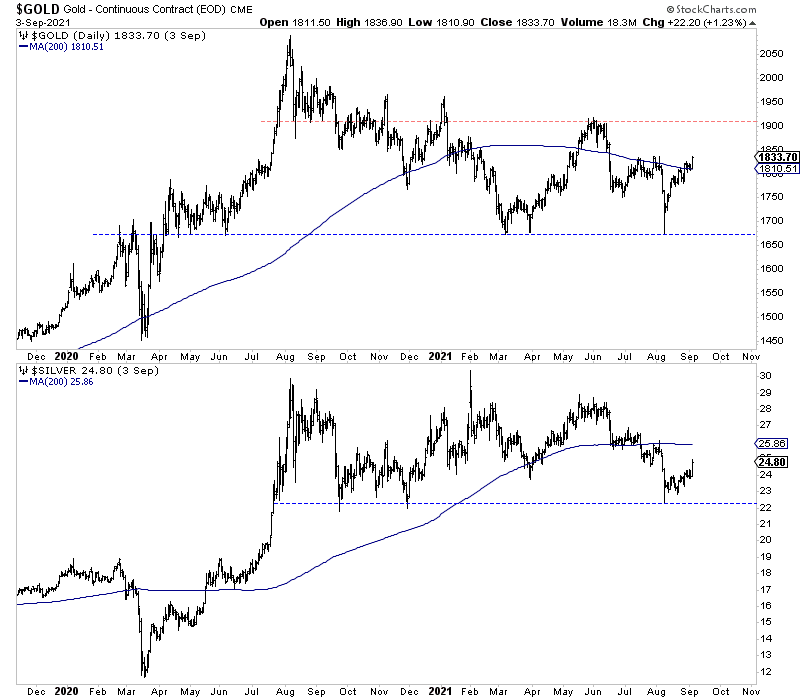
The market perceived the Fed statement a few weeks ago as dovish, and last Friday’s jobs report, which was disappointing, reinforced that. As a result, the previously oversold precious metals sector is rallying.
The charts show there are clear rally targets.
Let’s start with GDXJ, the best proxy for most who invest in the sector.
GDXJ has a very strong confluence of support, around $48.
That includes lateral resistance at $47.50, which dates back to 2013 and is also the 38% retracement for the 2020 advance. The 200 and 400-day moving averages are roughly 1% apart and could converge around the mid $48s.
The HUI has initial lateral resistance at 275. The 200-day and 400-day moving averages are at 282 and 285, respectively.
The next chart plots the daily bar charts of Gold (top) and Silver (bottom) along with their 200-day moving averages.
Gold faces initial resistance in the $1830s and around $1860 but has a decent chance to rally up to major resistance at $1900.
The initial upside target for silver is $26, right around its 200-day moving average. It could stop there or trend a bit higher to $27.
Macro-market developments will help inform us how sustainable this rebound is and if it could ultimately surpass upcoming resistance levels.
Gold against the stock market and fold against foreign currencies are two leading indicators that can provide hints.
If the economic recovery stalls enough to hit the stock market, that is a potential catalyst for fold. But if precious metals rally with everything else, including the stock market, the rally won’t be too sustainable.
I’m focused on finding the producers and developers with 7 to 10 bagger potential over the next two to three years. There is less long-term risk as these types of companies can add value irrespective of metals prices. And the recent decline in the sector has priced out most of the risk in some of these stocks



